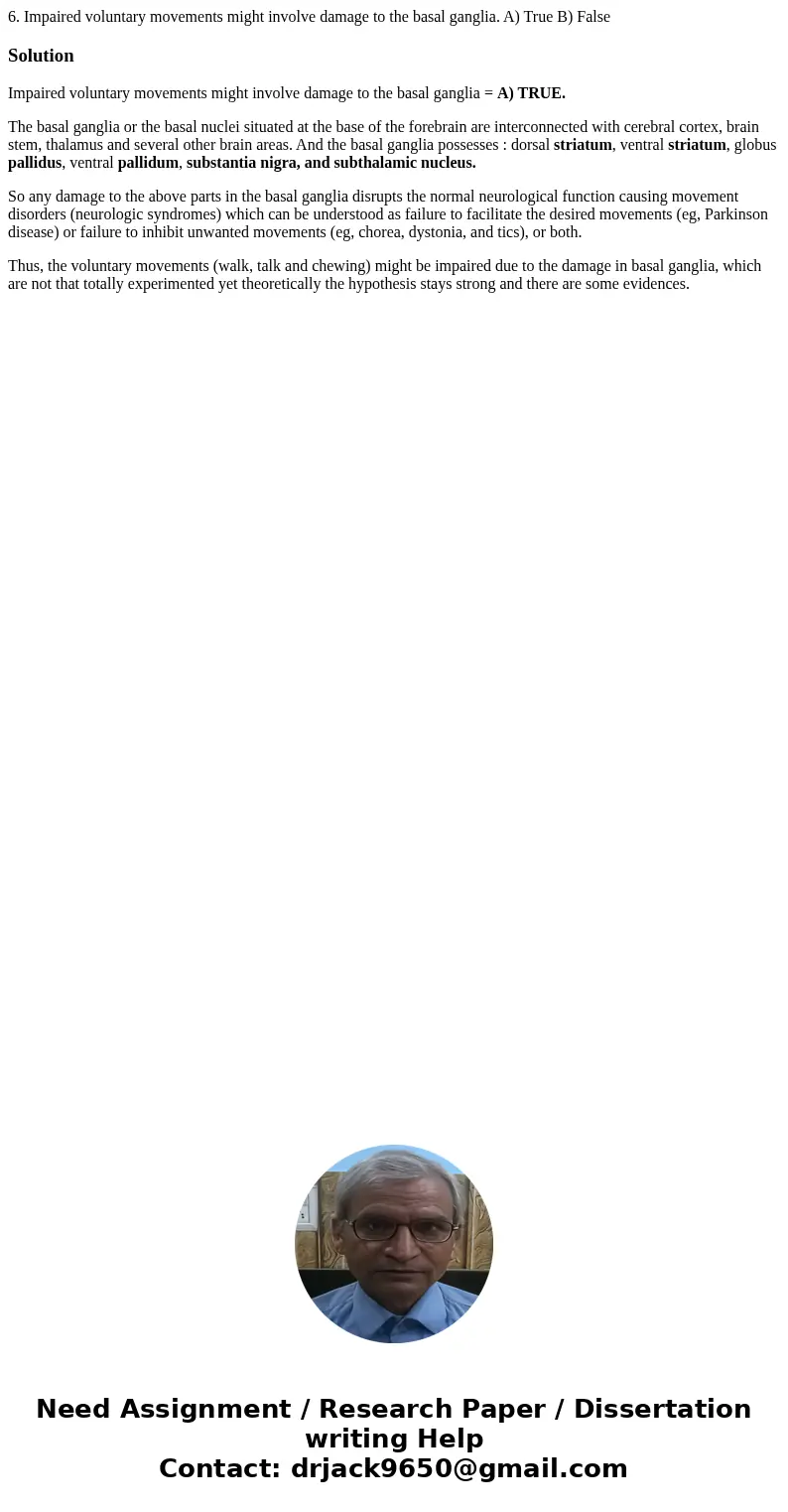6 Impaired voluntary movements might involve damage to the b
Solution
Impaired voluntary movements might involve damage to the basal ganglia = A) TRUE.
The basal ganglia or the basal nuclei situated at the base of the forebrain are interconnected with cerebral cortex, brain stem, thalamus and several other brain areas. And the basal ganglia possesses : dorsal striatum, ventral striatum, globus pallidus, ventral pallidum, substantia nigra, and subthalamic nucleus.
So any damage to the above parts in the basal ganglia disrupts the normal neurological function causing movement disorders (neurologic syndromes) which can be understood as failure to facilitate the desired movements (eg, Parkinson disease) or failure to inhibit unwanted movements (eg, chorea, dystonia, and tics), or both.
Thus, the voluntary movements (walk, talk and chewing) might be impaired due to the damage in basal ganglia, which are not that totally experimented yet theoretically the hypothesis stays strong and there are some evidences.

 Homework Sourse
Homework Sourse